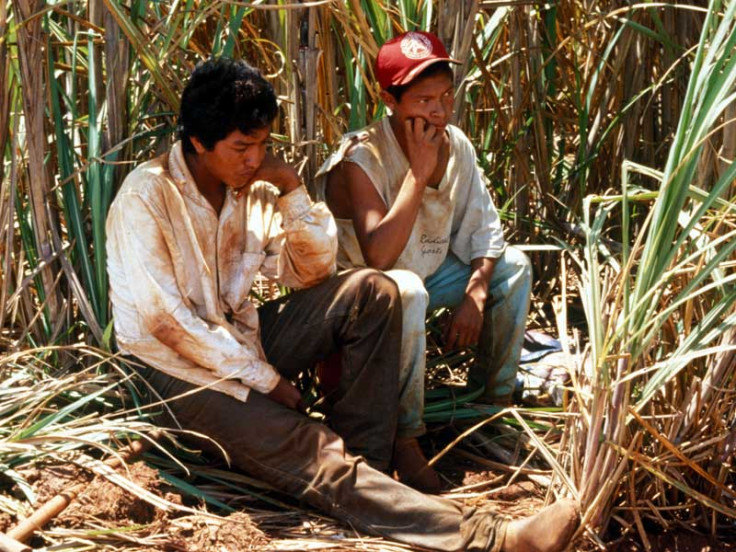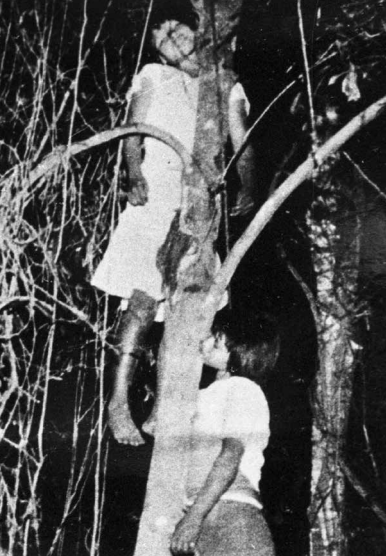Indigenous Guarani Kaiowá people of Brazil have 'appalling suicide rate' due to loss of ancestral land [Graphic images]

The rate of suicide within the indigenous Guarani Kaiowá people of Brazil is 34 times the country's national average and statistically the highest among any society anywhere in the world, according to a new report by Survival International.
The main reason given for the group's high rate of self-inflicted deaths is attributed to the loss of their ancestral lands.
"The Guarani are committing suicide because we have no land. We don't have space any more. In the old days, we were free, now we are no longer free," Rosalino Ortiz Guarani Ñandeva explains. "So our young people look around them and think there is nothing left and wonder how they can live. They sit down and think, they forget, they lose themselves and then commit suicide."
The connection between loss of ancestral land and suicide rates is borne out by the fact that the area of Dourados has the highest rate of self-inflicted death, where the land problem is most acute and Guarani live together in over-populated reserves.
As one Guarani told Survival: "In Dourados, where there have been the highest incidence of suicides, a young person told me he didn't want to live any more because there was no reason to carry on living – there is no hunting, no fishing, and the water is polluted."
Data compiled by the Brazilian NGO CIMI show a total of 625 suicides amongst the Guarani population in the past 28 years. The youngest Guarani to kill herself was Luciane Ortiz, at just nine years old. Research by the National Health Agency (Fundação Nacional de Saúde- FUNASA) shows that of the 34 Guarani communities and reserves, suicides have been reported in 28 communities and one reserve.
CIMI also states that high rates of suicide occur in communities where people are trapped in the centre of their territories which have been taken over by ranchers. Other motives for suicide are poverty, hunger and precarious housing, as well as the lack of opportunities to earn wages in the communities following the loss of land and the destabilising impact of the intense manual labour in sugar cane factories.
Today, the Guarani are squeezed onto tiny patches of land surrounded by cattle ranches and large fields of soya and sugar cane. Some have no land at all, and live camped by roads or in sites at the side of busy motorways. Malnutrition is a serious problem and since 2005 at least 53 Guarani children have died of starvation.
Fight to reclaim ancestral land
In the last 500 years virtually all the Guarani's land in Mato Grosso do Sul state has been taken from them, where the tribes once occupied homeland of forests and plains of more than 350,000 kilometres.

Waves of deforestation have converted the Guarani homeland into a network of cattle ranches, and sugar cane plantations for Brazil's biofuels market.
Many of the Guarani were herded into small reservations, which are now chronically overcrowded. In the Dourados reserve, for example, 12,000 Indians are living on little more than 3,000 hectares.
Under the Brazilian Constitution, the Brazilian Indian statue, and the UN-affiliated International Labour Organization, the Guarani, like all other indigenous peoples, have the right to live on their own land. It was supposed to be returned to them by 1993 but the process has come to a near standstill.
The Guarani themselves have been very active in campaigning for their rights, particularly through their own association, Aty Guasu. Internationally and within Brazil they are supported by several indigenous and human rights organisations, including Survival International in their Progress can Kill report.
According to CIMI, the majority of Indians killed in Brazil are Guarani. In 2012, the rate of assassinations of Guarani was four times that of Brazil's national homicide rate – which is already one of the highest in the world.
The fight for land often escalates into violence. In September 2015, members of the Guarani-Kaiowa tribe mourned the death of a 24-year-old man, Semiao Vilhalva. He was killed – shot in the face – during an invasion, or re-occupation, of three farms in the western state of Matto Grosso do Sul. The gunman, according to tribesmen, was a hired "pistoleiro" brought in by the farmers to intimidate and scare off the Guarani, according to a BBC report.
Elderly members of the tribe chanted tributes in their native tongue and led mourners across fields they say have belonged to their people for centuries – long before the ranchers arrived.
Who are the Guarani Kaiowá tribe?
In Brazil today there are around 51,000 Guarani living in seven states, making them the country's biggest tribe. Many others live in neighbouring Paraguay, Bolivia and Argentina.
The Guarani in Brazil have been here for centuries and are divided into three groups: Kaiowá, Ñandeva and M'byá, of which the largest is the Kaiowá which means "forest people".
They live by a combination of hunting, fishing, and planting crops. The theft of their land means there is not enough space to support their population with food. They have a very close religious connection to their land and call it "The place without evil".
Over hundreds of years, the Guarani have travelled vast distances in search of this land. One 16<sup>th-century chronicler noted their "constant desire to seek new lands, in which they imagine they will find immortality and perpetual ease". Depression as a result of this loss of identity is a major cause of suicide within the tribe.
© Copyright IBTimes 2025. All rights reserved.






















